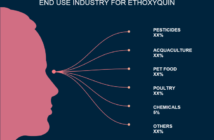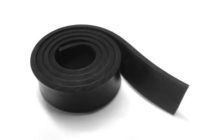Rising living standards of people across the globe consequently contribute towards growth of end-use industries of foam blowing agents. Apart from this, in recent years, increase in purchasing power parity (PPP) has helped in the development of the flooring and furnishing industry, which demands polymeric foams for shock absorption. Thus, increased adoption of polymeric foams is projected to boost the global market growth.
Geographically, Asia Pacific has been the largest contributor to the global foam blowing agents market. The market growth can be owed to substantial infrastructural development, which helped the construction industry to expand in the region, especially in India, Thailand, South Korea and Vietnam; technological advancements and rapid industrialization. However, high costs associated with shifting technology, along with rampant changes in the United States Environmental Protection Agency (EPA), is looking at significant new alternatives policy (SNAP) in the foam blowing agents such as introduction of fourth-generation blowing agenta, AFA series and urethane foams, among others, which will replace the use of HCFC and HFC. It has taken effect since January 1, 2017, which in turn would restrain growth of the market of foam blowing agents.
Ask for detailed Sample of the Research Report @ https://www.coherentmarketinsights.com/insight/request-sample/325
*The Sample consists of Table of Content, Research framework of the actual report & research methodology adopted for it.
Some of the major companies in the foam blowing agents market are Arkema S.A., Exxon Mobil Corporation, Daikin Industries, Ltd., ZEON Corporation, Honeywell International Inc., Haltermann GmbH, Harp International Ltd., Sinochem Group, E.I. du Pont de Nemours & Company, and Solvay S.A. Other well-known companies in the global market include Linde AG, Astra Polymers, AkzoNobel N.V., KSJN Catalyzing Industries, Lychem International Co., Limited, SPL Group, Sunwell Global Ltd., BEO International, and Marubeni Corporation.
Reduction of greenhouse emissions a key focus areas of players in the global foam blowing agents market
The global foam blowing agents market is largely being driven by the constant advancements in technology. For instance, Chemours Company came up with Opteon™ 1100 foam blowing agent and BASF SPRAYTITE® foam insulation technologies, which ensure exceptional thermal insulation performance as well as reduced energy usage. These technologies also offer benefits such as reduction in greenhouse gas emissions and reducing environmental footprint.
Access Table of Content (TOC) of the report :https://www.coherentmarketinsights.com/ongoing-insight/toc/325
Foam Blowing Agents Market Taxonomy
On the basis of type, the global market is classified into:Hydrofluorocarbons (HFCs),HFC-245fa,HFC-134a,HFC-152a,HFC-365mfc,Hydrochlorofluorocarbons (HCFCs),HCFC-141b,HCFC-142-b,HCFC-22,Others,Hydrocarbons (Hcs),N-Pentane,Isopentane,Cyclopentane,IsobutaneOthers,OthersMethyl formate,Hydrofluoroolefin (HFO),Inert gases,Others
On the basis of application, the global market is classified into:Polyurethane Foam,Polyolefin Foam,Polystyrene Foam,Phenolic Foam,Others



